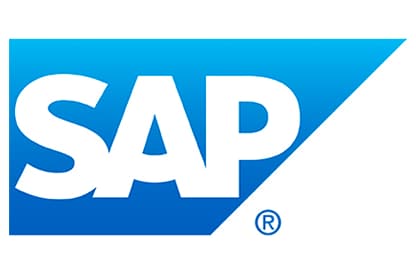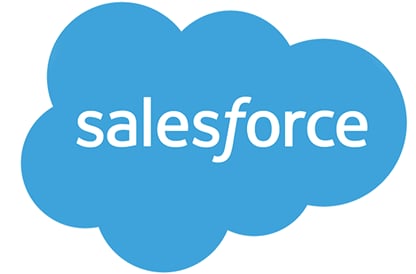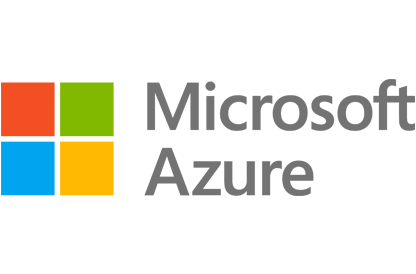Why OpenText
Why OpenText
Overview Why OpenText
OpenText brings decades of expertise to help you unlock data, connect people and processes, and fuel AI with trust
Manage and connect data
Unify data seamlessly across your enterprise to eliminate silos, improve collaboration, and reduce risks
AI-ready information
Get AI-ready and transform your data into structured, accessible, optimized information
Built-in security and compliance
Meet regulatory and compliance requirements and protect your information throughout its lifecycle
Empowering people
Overview Empowering people
OpenText helps people manage content, automate work, use AI, and collaborate to boost productivity
Customers
See how thousands of companies around the world are succeeding with innovative solutions from OpenText
Employees
Our people are our greatest asset; they are the life of the OpenText brand and values
Corporate Responsibility
Learn how we aspire to advance societal goals and accelerate positive change
Partners
Find a highly skilled OpenText partner with the right solution to enable digital transformation
How we compare
Content Management
Service Management
Deploy anywhere
Overview Deployment options
Explore scalable and flexible deployment options for global organizations of any size
Sovereign cloud
Local control. Global scale. Trusted AI
Private cloud
Your cloud, your control
On-premises
Free up resources, optimize performance and rapidly address issues
Public cloud
Run anywhere and scale globally in the public cloud of your choice
AI leadership
Overview Aviator AI
See information in new ways
OpenText™ Aviator AI
AI that understands your business, your data, and your goals
OpenText™ MyAviator
Say hello to faster decisions. Your secure personal AI assistant is ready to get to work
OpenText™ Business Network Aviator
Gain better insights with generative AI for supply chains
OpenText™ Content Aviator
Power work with AI content management and an intelligent AI content assistant
OpenText™ Cybersecurity Aviator
Improve your security posture with AI cybersecurity and agile threat detection
OpenText™ DevOps Aviator
Enable faster app delivery, development, and automated software testing
OpenText™ Experience Aviator
Elevate customer communications and experiences for customer success
OpenText™ Service Management Aviator
Empower users, service agents, and IT staff to find the answers they need
Aviator AI
Overview Aviator AI
See information in new ways
OpenText™ Aviator AI
AI that understands your business, your data, and your goals
OpenText™ MyAviator
Say hello to faster decisions. Your secure personal AI assistant is ready to get to work
OpenText™ Business Network Aviator
Gain better insights with generative AI for supply chains
OpenText™ Content Aviator
Power work with AI content management and an intelligent AI content assistant
OpenText™ Cybersecurity Aviator
Improve your security posture with AI cybersecurity and agile threat detection
OpenText™ DevOps Aviator
Enable faster app delivery, development, and automated software testing
OpenText™ Experience Aviator
Elevate customer communications and experiences for customer success
OpenText™ Service Management Aviator
Empower users, service agents, and IT staff to find the answers they need
Analytics
Overview Analytics
Predict, act, and win with real-time analytics on a smarter data platform
OpenText™ Aviator Search(AI)
Give users access to the answers they need, faster and easier, with multi-repository AI-based search that lets you contextualize everything from clicks to conversations
Business Network
Overview Business Network
Connect once, reach anything with a secure B2B integration platform
Content
Overview Content
Reimagine knowledge with AI-ready content management solutions
OpenText™ Content Aviator(AI)
Supercharge intelligent workspaces with AI to modernize work
Cybersecurity
Overview Cybersecurity
Integrated cybersecurity solutions for enterprise protection
OpenText Cybersecurity for SMBs & MSPs
Purpose built data protection and security solutions
OpenText™ Cybersecurity Aviator(AI)
Reinvent threat hunting to improve security posture with the power of agile AI
DevOps
Overview DevOps
Ship better software—faster—with AI-driven DevOps automation, testing, and quality
Experience
Overview Experience
Reimagine conversations with unforgettable customer experiences
Observability and Service Management
Overview Observability and Service Management
Get the clarity needed to cut the cost and complexity of IT operations
OpenText™ Service Management Aviator(AI)
Redefine Tier 1 business support functions with self-service capabilities from private generative AI
APIs
Overview APIs
Build custom applications using proven OpenText Information Management technology
OpenText™ API Services
Build it your way with OpenText Cloud APIs that create the real-time information flows that enable custom applications and workflows
Device and Data Protection
Overview Device and Data Protection
Protect what matters, recover when it counts
Unified Endpoint Management Tools
- OpenText™ Endpoint Management
- OpenText™ ZENworks Suite
- OpenText™ ZENworks Service Desk
- OpenText™ ZENworks Configuration Management
- OpenText™ ZENworks Endpoint Security Management
- OpenText™ ZENworks Full Disk Encryption
- OpenText™ ZENworks Endpoint Software Patch Management
- OpenText™ ZENworks Asset Management
Solutions
Trusted Data & AI
Overview Trusted Data & AI
Secure information management meets trusted AI
OpenText AI Data Platform
A unified data framework to elevate data and AI trust
OpenText Aviator Studio
A place where you can build, deploy, and iterate on agents in your data's language
OpenText Discovery
A set of tools to help ingest data and automate metadata tagging to fuel AI
OpenText Data Compliance
A suite of services and APIs that make governance proactive and persistent
OpenText Aviator AI Services
Professional services experts who help you on your AI journey
Information Reimagined
Overview Information Reimagined
Get greater visibility and sharper insights from AI-driven information management. Ready to see how?
Knowledge reimagined
Transform daily work with enterprise content management powered by AI
Service Management reimagined
Cut the cost and complexity of IT service management, AIOps, and observability
Connections reimagined
AI-powered B2B integration for supply chain success
Conversations reimagined
Drive value, growth, and loyalty with connected customer experiences
Engineering reimagined
Agile development and software delivery? It only seems impossible
Security reimagined
Cybersecurity for the Enterprise
Decisions reimagined
Unlock insights with AI data analytics
Artificial Intelligence
Overview Aviator AI
See information in new ways
OpenText™ Aviator AI
AI that understands your business, your data, and your goals
OpenText™ MyAviator
Say hello to faster decisions. Your secure personal AI assistant is ready to get to work
OpenText™ Business Network Aviator
Gain better insights with generative AI for supply chains
OpenText™ Content Aviator
Power work with AI content management and an intelligent AI content assistant
OpenText™ Cybersecurity Aviator
Improve your security posture with AI cybersecurity and agile threat detection
OpenText™ DevOps Aviator
Enable faster app delivery, development, and automated software testing
OpenText™ Experience Aviator
Elevate customer communications and experiences for customer success
OpenText™ Service Management Aviator
Empower users, service agents, and IT staff to find the answers they need
Industry
Overview Industry solutions
Improve efficiency, security, and customer satisfaction with OpenText
Energy and resources
Transform energy and resources operations with cloud, cybersecurity, and AI
Financial services
Boost customer experience, compliance, and efficiency with AI
Government
Reimagine your mission with government-secure information management
Healthcare and life sciences
Improve care delivery and patient engagement with AI-powered solutions
Legal
Modernize legal teams with automated, AI-powered legal tech solutions
Manufacturing
Modernize manufacturing operations and logistics to reduce costs and ensure compliance
Retail and consumer goods
Enhance consumer engagement with omnichannel retail solutions and AI
Enterprise Application
Overview Solutions for Enterprise Applications
Run processes faster and with less risk
Services
Services
Overview Services
Achieve digital transformation with guidance from certified experts
Professional Services
Modernize your information management with certified experts
Customer Success Services
Meet business goals with expert guidance, managed services, and more
Support Services
Turn support into your strategic advantage
Managed Services
Free up your internal teams with expert IT service management
Learning Services
Discover training options to help users of all skill levels effectively adopt and use OpenText products
Professional Services
Overview Professional Services
Modernize your information management with certified experts
Customer Success Services
Overview Customer Success Services
Meet business goals with expert guidance, managed services, and more
Support Services
Overview Support Services
Turn support into your strategic advantage
Managed Services
Overview Managed Services
Free up your internal teams with expert IT service management
Learning Services
Overview Learning Services
Discover training options to help users of all skill levels effectively adopt and use OpenText products
Partners
Find a Partner
Overview Find a partner
Information is the heartbeat of every organization. We build information management software so you can build the future
Cloud Partners
Overview Cloud Partners
OpenText partners with leading cloud infrastructure providers to offer the flexibility to run OpenText solutions anywhere
Enterprise Application Partners
Overview Enterprise Application Partners
OpenText partners with top enterprise app providers to unlock unstructured content for better business insights
Partner Solutions
Overview Partner Solutions
Discover flexible and innovative offerings designed to add value to OpenText solutions
Resources for Partners
Overview Resources for Partners
Discover the resources available to support and grow Partner capabilities
Support
Overview Customer Support
Get expert product and service support to accelerate issue resolution and keep business flows running efficiently
Resources
Overview Resources
Explore detailed services and consulting presentations, briefs, documentation and other resources
Choose your region:
Europe, Middle East and Africa
Asia–Pacific
What is Cloud Backup?
Cloud backup is a data protection strategy where data residing in the cloud is backed up

Overview
Cloud backup is crucial for protecting sensitive data stored in remote data centers. These centers are vulnerable to natural disasters and cybercriminals, potentially exposing critical customer information. With the rise of cloud-based solutions like Microsoft® 365 and SalesForce®, organizations must implement robust backup strategies to safeguard data from loss, ensuring business continuity and regulatory compliance.
Back up your cloud workloads
Cloud Backup
What is the "cloud"?
The “cloud” is a term used to describe the delivery of computing resources, such as storage and applications, over the internet. The cloud is made up of many servers located in different parts of the world, owned and managed by cloud providers, who offer their services. For example, Amazon Web Services® (AWS), Microsoft® Azure®, Google® Cloud and many more. Cloud is typically used for storing data that doesn't need to be kept confidential.
- Private cloud storage:: This type of cloud storage is used by organizations that want to store data in a secure environment where data can only be accessed by authorized users. Private cloud storage is offered by cloud providers such as Rackspace® and IBM® Bluemix™.
- Hybrid cloud storage: This type of cloud storage combines public and private clouds. It allows companies to store sensitive data in a private cloud while using the public cloud for less sensitive data.
What is cloud backup?
Cloud backup—sometimes referred to as online backup or remote backup—is the process of backing up data to cloud-based servers. When you back up your data to the cloud, you're storing a copy of that data on one or more remote servers, which are owned and managed by a third-party cloud service provider. Typically, cloud service providers charge fees based on things like the amount of storage space or servers required, available server bandwidth, and the number of users who access these servers.
What is cloud SaaS backup?
SaaS backup is a cloud workload protection service that creates and stores copies of data generated in cloud-based Software-as-a-Service (SaaS) applications. SaaS data backup and recovery involves duplicating and storing data from cloud-based software applications in a separate location. Its primary purpose is to protect against data loss and enable quick recovery in case of accidental deletion, security incidents, or system failures.
How does cloud backup mitigate cyberattacks?
Cloud backup can help mitigate cyberattacks in two ways. First, cloud data backup and recovery can help you quickly restore your company's data if it's compromised because the cloud provider maintains multiple copies of your data on different servers. If one server is compromised, you can still access your data from another server.
Second, cloud backup can help you quickly recover your data in an instant, especially if your company is being targeted by ransomware. Ransomware is a type of malware that encrypts your company's data and holds it hostage until you pay a ransom. With cloud backup, you can simply restore your company's data from the cloud and avoid paying the ransom.
What are the benefits of cloud backup?
There are many benefits of cloud backup, including:
- Increased availability: By replicating your company's data on cloud-based servers, you're ensuring that a copy of that data is always available. For example, virtual machine (VM) backup in the cloud would provide critical VM availability and protection during unplanned downtime.
- Reduced costs: By using the cloud for backup, you're taking advantage of the cloud provider's hardware infrastructure, which can significantly reduce your company's IT costs.
- Greater scalability: The cloud is a scalable platform, which means you can add or remove resources as needed, making it an ideal solution for businesses that experience periodic spikes in demand.
- Enhanced security: The cloud is a secure platform and offers multiple layers of security protection, which are critical for businesses that store sensitive data.
- Improved disaster recovery: By using the cloud for disaster recovery, you can quickly and easily restore your company's data in the event of a disaster. In fact, a cloud backup can even help you prevent data loss.
How can OpenText help with cloud backup and cloud SaaS backup?
Cloud backup is an essential component for any organization that stores sensitive data, whether in a physical data center or online. The solution you choose to back up your data will make the difference in how effective a data protection initiative is.
With OpenText™ Data Protector, you can can manage a comprehensive data backup across different cloud platforms.
Request a live demo of OpenText Data Protector to see how it works. Request a free trial to get started on your own.With OpenText™ CloudAlly™ customers obtain comprehensive high-availability SaaS data protection of Microsoft® 365, Exchange®, SharePoint®, OneDrive®, Teams®, Salesforce, Google Workspace™, Dropbox®, and Box®. Choose to back up on stringently secure and encrypted Amazon’s AWS S3® storage or your own storage (BYOS).
Customers stay compliant with audit-ready compliant backup that is ISO certified and HIPAA/GDPR compliant with OAuth, OpenID, MFA/2FA, and Okta support as well as a choice of nine data centers. Business continuity is ensured when data loss strikes with quick and easy snapshot recovery, smart granular recovery by keyword, and cross user/site restore. Choose to export data to your own storage in Zip format or directly to your own S3, Azure, Box or Dropbox storage.
Learn more about OpenText Data Protector and OpenText CloudAllyWatch our cloud data backup and recovery webinar series.
Cloud workload protection analyst white paper
Resources
-
Maintaining Business Continuity by using a solid backup and recovery strategy
-
Enterprise backup and OpenText CloudAlly backup software in one convenient package
-
Maximizing SAP® HANA® Investment Protection: A Strategic Guide for IT Leadership
-
What’s new in OpenText Data Protector 24.3
-
Convenient or Secure, What Is Your Approach to Data Protection?
-
OpenText Data Protector and OpenText™ WebRoot Integration: Why it’s Becoming an Imperative
-
Why should one have a second and third copy of a backup?
-
Organizations moving away from VMWare and needing Migration and Backup that supports their new VM platform
-
What is new in OpenText Data Protector 24.4
-
DORA & NIS2, a game changer for your corporate´s Cyber Resilience Strategy
-
Why do you need protection from data losses?
-
Backup/Restore Bottleneck Detection and Performance Tuning with OpenText Data Protector
-
Data Protector and HPE StoreOnce helps reduce backup volumes and costs
-
Gutenberg Rechenzentrum speeds up data recovery with HPE StoreOnce and Data Protection
-
Robert-Bosch-Krankenhaus selects high-performance data storage technologies for a modern hospital
-
Data Protector ensures high availability and performance to meet clients’ SLA requirements for this SAP hosting service provider
-
Government agency uses Data Protector to standardize and streamline its backup, recovery, and off-site replication processes
-
Data Protector creates consistent infrastructure design to streamline backup strategy and maintain full regulatory compliance
-
The Telenor Group standardizes and optimizes backup environment at Hungary unit with Data Protector and Backup Navigator
-
Data Protector supports cost optimization through streamlining and simplifying physical and virtual data protection and storage
-
Data Protector modernizes backup approach for improved compliance and more effective disaster recovery
-
Data Protection effectively protects rapidly expanding data volumes
-
ArcelorMittal Bremen uses OpenText™ Data Protector as an efficient and reliable way to back up most of its business data
Related products
OpenText™ Data Protector
Enable simple, secure data backup and recovery
OpenText™ Data Protector for Cloud Workloads
Enterprise cloud workload protection
OpenText™ Retain Unified Archiving
A single, unified business communications archive
OpenText™ CloudAlly
Protect all your business-critical saas data with one secure cloud backup and recovery solution





